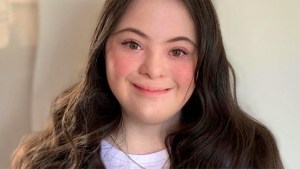Mattel recently announced their latest addition to the Barbie world, met with much positivity. The doll, which depicts Barbie with Down syndrome, is allowing the range to become more inclusive and letting a more vulnerable group of individuals be proudly represented in society.
The move comes after other dolls that don’t conform with the original long-limbed blonde, tiny-waisted version of the 1950s were added to the range. In the past few years dolls with hearing aids, wheelchairs, and prosthetic limbs have been available on store shelves.
In a bid to represent more real women, the brand’s goal was to enable “all children to see themselves in Barbie,” and “play with dolls who do not look like themselves,” according to a report in the BBC.
And as Mattel’s global head of Barbie and Dolls, Lisa McKnight, pointed out, the company aims to “teach understanding and build a greater sense of empathy, leading to a more accepting world,” with their latest addition.
The company worked closely with the US National Down Syndrome Society (NDSS) to include specific design details so that she could easily be distinguished as having Down syndrome.
While the characteristic physical features, such as eye and nose shape, help to accurately represent Down syndrome, the toy company paid particular attention to other details, too.
The colors of the dress are linked to awareness campaigns about Down syndrome, and the pink necklace has “three upward chevrons representing the three copies of the 21st chromosome, the genetic material that causes the characteristics associated with Down’s syndrome,” according to the BBC.
While the new doll is a much-welcomed extension of the range, the words of a British model with Down syndrome, Ellie Goldstein, really show the impact of the new doll on those with that extra chromosome.
In the reel below, the successful model, who is featured in the latest edition of British Vogue, shared how she was “overwhelmed” by the new doll and that she “loves it to pieces”– something that’s easy to note when you see her hug it!
But, importantly, she points out that “diversity is important as people need to see more people like me out there in the world and not be hidden away.”
She quite rightly also shares just how capable those with Down syndrome are. While doctors were pessimistic about her own future, she “proved them wrong” and has gone on to enjoy a successful career.
And beyond all the marketing and advertising for the doll , Goldstein’s own words are all we need to hear, as she most accurately states: “She is perfect like me, and I am perfect like her.”
Take a few minutes to watch the model and Barbie fan share her love for the new doll:



